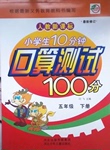题目内容
Made In The USA: An Export Boom
In his State of the Union address two years ago, President Obama argued that in order to recover from the economic recession, one of the few things the U.S. needed to do was to export more goods around the world. That night, the president unveiled a new goal: to double U.S. exports over the next five years. It would be an increase that the president said would “support two million jobs in America.”
Most economists dismissed the promise at the time as something unrealistic, but two years later, the U.S. is on pace to meet that goal. American exports are up 34 percent since the president gave that speech, and the number continues to rise.
Competitive In A Global Market
Marlin Steel, a metal working business in Baltimore, makes parts that ship all across the world. “We export to 36 countries,” owner Drew Greenblatt tells All Things Considered Host Guy Raz. “We're working around the clock, and we're growing.”
It's not just advanced manufacturing exports on the rise, but pork, cattle and all kinds of agricultural exports are up as well. Even American craft beer has found an export market.
Flying Dog CEO Jim Caruso says that increasingly, people all over the world are trying the beer from the Maryland-based brewery. Caruso says,“Even in those top beer-producing countries, a competitive American product is finding a market.”
Services Are Exports, Too
Another place exports are coming from is New York City—in particular, the 30th floor of a Manhattan skyscraper on 5th Avenue and 52nd Street. That's where the consulting firm Kurt Solomon lies. It doesn't actually produce a product for export; it provides management advice and strategy.
“Four out of every five Americans is now employed in the service industry,” the nation's top trade official, Ron Kirk says, “Services are a significant part of our exports, and make up about a quarter of our exported goods.” These services can include everything from legal consulting, finance, information technology and even engineering.
And There Are Other Factors
So why has there been an increase of more than 30 percent for exports in almost everything? Part of the increase, at least for the manufacturing side, is due to better technology, says Tyler Cowen, an economist. “A lot of it is being driven by smart machines,” he tells Raz,“The U.S. has high wage rates, which is a disadvantage, but if machines are doing a lot of the work, that doesn't matter.”
China factors a lot in America's export economy, too. “Wages in China have been going up as the country becomes more productive. Thus China is losing the cheap labor advantage it has held for some time.” Cowen says.
Will Jobs Grow, too?
“Companies have become more productive by dismissing workers and lowering costs.” Cowen says. “So I don't view exporting as a way of creating a very large number of jobs, but it will create more profits.”
So not every business or worker is necessarily benefiting from the export boom in the U.S., and Cowen says that could ultimately lead to a polarization (两极) of economic outcomes.
Made In the USA: An Export Boom
|
Outline |
Details |
|
|
The purpose of increasing exports |
*To help America make a (1)______ from the economic recession. *To help increase the nation's (2)______ . |
|
|
The current situation |
*American exports have risen (3)______ thirty-four percent up to now. *There has been an increase in exports in everything. *The export boom does not necessarily (4)______ every business or worker. |
|
|
(5)______ contributing to the export boom |
(6)______products |
Even in those top beer-producing countries, people try craft beer from Flying Dog, a brewery (7)______ in Maryland. |
|
Various products |
A variety of products are provided around the world,services (8)______ for 25%. |
|
|
Lower costs |
*(9)______ take the place of labor, helping companies reduce wages. *China, who used to take (10)______ of cheap labor, has given way to America in exports to some extent because of its increasing production. |
recovery
jobs
by
benefit
Factors
Competitive
located/based
accounting
Machines
advantage
【解析】
试题分析:这篇文章主要介绍了美国的出口繁荣。
根据President Obama argued that in order to recover from the economic recession.
根据support two million jobs in America.
根据 American exports are up 34 percent since the president gave that speech, and the number continues to rise.
根据So not every business or worker is necessarily benefiting from the export boom in the U.S., and Cowen says that could ultimately lead to a polarization (两极) of economic outcomes.
根据And There Are Other Factors
根据Competitive In A Global Market
根据Flying Dog CEO Jim Caruso says that increasingly, people all over the world are trying the beer from the Maryland-based brewery.
根据Services are a significant part of our exports, and make up about a quarter of our exported goods.
根据“A lot of it is being driven by smart machines,” he tells Raz,
根据Thus China is losing the cheap labor advantage it has held for some time.” Cowen says.
考点:考查学生对文章的理解能力
点评:先略读短文,把握文章大意以及文章的脉络;然后快速浏览表格,借助所给图表结构与文章内容进行对比,并确定表格中某一行或某一列 与文章中某一段落之间的对应关系,进行答题。

 小学生10分钟口算测试100分系列答案
小学生10分钟口算测试100分系列答案
| |||||||||||||||||||||||||||||||||||||||||||||||||||||||||||
| |||||||||||||||||||||||||||||||||||||||||||||||||||||||||||
—It’s really a surprise th at the manager should have no idea about the plan.
—Of course he doesn’t, for the plan was made in his .
| A.shortage | B.analysis | C.absence | D.presence |